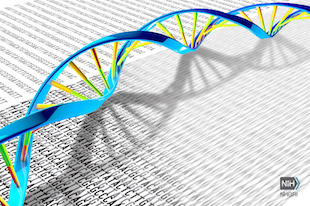Highlights
- •p300 acetylates BRAF at K601 to promote BRAF kinase activity
- •Deacetylation of BRAF by SIRT1 decreases BRAF kinase activity
- •BRAF-K601 acetylation modulates the interaction of BRAF with its binding partners
Summary
Aberrant BRAF activation, including the BRAFV600E mutation, is frequently observed in human cancers. However, it remains largely elusive whether other types of post-translational modification(s) in addition to phosphorylation and ubiquitination-dependent regulation also modulate BRAF kinase activity. Here, we report that the acetyltransferase p300 activates the BRAF kinase by promoting BRAF K601 acetylation, a process that is antagonized by the deacetylase SIRT1. Notably, K601 acetylation facilitates BRAF dimerization with RAF proteins and KSR1. Furthermore, K601 acetylation promotes melanoma cell proliferation and contributes to BRAFV600E inhibitor resistance in BRAFV600E harboring melanoma cells. As such, melanoma patient-derived K601E oncogenic mutation mimics K601 acetylation to augment BRAF kinase activity. Our findings, therefore, uncover a layer of BRAF regulation and suggest p300 hyperactivation or SIRT1 deficiency as potential biomarkers to determine ERK activation in melanomas.
Introduction
The RAF family protein kinases A-Raf proto-oncogene (ARAF), B-Raf proto-oncogene (BRAF), and Raf-1 proto-oncogene (CRAF) play a vital role in regulating tumorigenesis primarily through activating its downstream MAPK/ERK kinase (MEK)/extracellular signal-regulated kinase (ERK) oncogenic signaling pathway (Wellbrock et al., 2004a). Activation of the RAF family of protein kinases involves multiple layers of protein post-translational modifications, as well as protein-protein interactions (McKay and Morrison, 2007). For example, RAS binding facilitates membrane localization of RAF proteins (Wellbrock et al., 2004a), whereas PP1- or PP2A-mediated dephosphorylation of RAF proteins disrupts inhibitory 14-3-3 binding (Abraham et al., 2000; Jaumot and Hancock, 2001; Light et al., 2002). More importantly, phosphorylation at the activation segment facilitates the full activation of RAF kinases (Zhang and Guan, 2000). We have previously demonstrated that BRAF ubiquitination and degradation can be governed by the APCFZR1 ubiquitin E3 in normal melanocytes (Wan et al., 2017) and the ITCH ubiquitin E3 ligase in melanoma cells (Yin et al., 2019). However, whether BRAF activity and BRAFV600E inhibitor sensitivity are regulated by additional post-translational modification remains poorly investigated.Protein acetylation is a reversible post-translational modification catalyzed by the opposing activities of protein acetyltransferases and deacetylases (Glozak et al., 2005; Spange et al., 2009). p300 and CREB Binding Protein (CBP) are among the best studied histone acetyltransferases (HATs), which acetylate a large number of histones and non-histone proteins (Kimura et al., 2005). In addition to its well-characterized role in histone acetylation, p300 governs a wide spectrum of cellular functions through conjugating the acetyl group to its non-histone substrates. Known p300 non-histone substrates include the signal transducer and activator of transcription 3 (STAT3) (Wang et al., 2005; Yuan et al., 2005), nuclear factor κB (NF-κB) (Chen et al., 2001), and Yin Yang 1 (YY1) (Yao et al., 2001), as well as other cell fate regulatory proteins, such as Skp2 (Inuzuka et al., 2012) and AF4/FMR2 family member 1 (AFF1) (Kumari et al., 2019).Here, we report that BRAF is subjected to p300-mediated acetylation at Lys601 (K601), which stimulates BRAF kinase activity. Moreover, we unveiled the deacetylase SIRT1 as the deacetylase antagonizing BRAF K601 acetylation. We found that K601 acetylation activates BRAF and facilitates melanomagenesis. Notably, the BRAFK601E oncogenic mutation, which is frequently found in melanoma patients, could partially mimic K601 acetylation to facilitate BRAF activation. All these findings together uncover a previously undefined regulation of BRAF kinase activity and BRAFV600E inhibitor resistance, thereby suggesting that ERK activation can be reflected partially by p300 hyperactivation or SIRT1 deficiency in melanoma cells.







